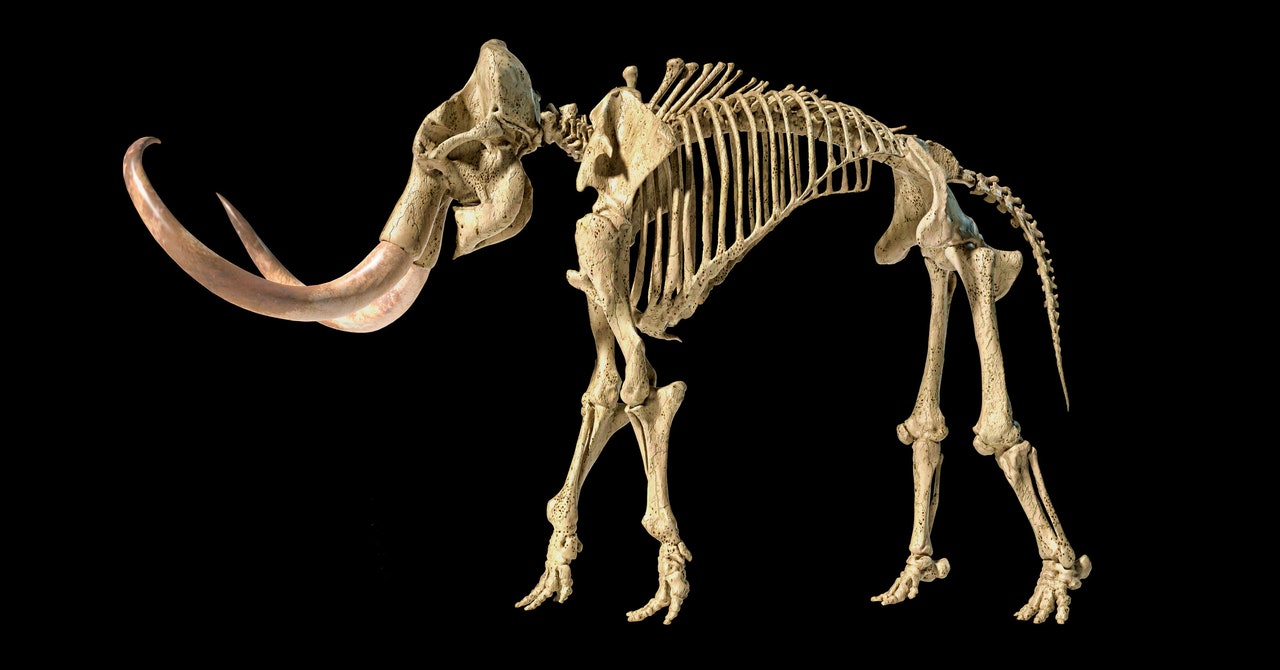
“That was very surprising to me,” says Bataille of these ranges, which were much larger than he’d expected. “It definitely asks the question why. What happened? Why is he doing this? Why is he moving this way, and so fast?”
This indication that mammoths needed a very large habitat to thrive could give us clues about why they went extinct, says David Nogués-Bravo, an associate professor of historical biogeography at the University of Copenhagen, who was not involved in the study. During this mammoth’s life, sometime at the very end of the last ice age, the Earth was warming up. Boreal forests were starting to take over the mammoths’ home on the grassy plains. Humans may have shown up and started hunting them too. By about 6,000 years after this mammoth’s death, the species was almost extinct. It’s hard for scientists to tease apart how different stressors could have collided to wipe out the mammoths, but having this basic data about their home ranges and how much they moved around could help them build models to recreate what might have happened.
Nogués-Bravo says techniques like isotopic mapping are a big step forward because they could help scientists trace the process of extinction. “It’s really opening up a big window to help us understand why species go extinct,” he says. That could ultimately help scientists anticipate what might happen to other large animals, like elephants, in the coming years as climate change and human interference limit their habitats.
But there are limits to how fine a picture the data from this tusk can paint. Nogués-Bravo says these maps are probably pretty accurate at giving a sense of where the animal generally was. But they aren’t GPS. “I’m more skeptical about the specific routes that they tried to model,” he says. To trace those routes, researchers would need really accurate isotope data from every square kilometer of the area, which is a level of detail their rodent-based map doesn’t have.
Still, while the portrait is a bit blurry, it’s an unprecedented look at what a single mammoth was doing during its life. For example, as Wooller and Bataille examined the base of the tusk, they started to see signs of trouble. The patterns of the strontium isotopes revealed that the animal was moving less and less, staying in a relatively small area and not migrating the hundreds of miles it had before. Scientists estimate that mammoths usually lived into their sixties or seventies, but at only 28 years old, this mammoth was starting to die. Over the last year of its life, the levels of nitrogen isotopes in its tusk started to spike, a pattern that indicates starvation in mammals. “It was like we captured what caused it to die,” says Wooller, though why the mammoth stopped moving and eating normally is still a mystery.
Now the researchers would like to apply this technique to tusks from other mammoths. Wooller is curious about whether other males behaved similarly to the one they tracked, and whether females had different migratory patterns than males. He also wonders how those movements changed as the planet kept heating up, so he wants to examine tusks from mammoths that lived during different time periods. That might offer more clues about whether they changed their range in response to the advance of the boreal forest, or because of the presence of humans. This technique could also be used on the teeth and antlers of other species that were alive during this time, like caribou or musk oxen, to see how each animal reacted to this changing world.
“What we’re showing here is that there’s a very rich and wonderful record that can be gained from this tusk,” says Wooller. Each is a vault of information, an entire life story waiting to be read.
More Great WIRED Stories


